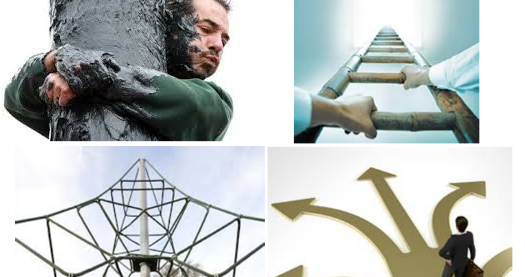How’s your career progressing?
When I started out on my career journey there was the view that to make progress you had to ‘climb the greasy pole’. Career progression was challenging and often based on survival of the fittest and a competitive mentality to get to the top.
Things then began to become more structured and the progression analogy evolved into the concept of a career ladder. Career paths and plans were developed that mirrored how current incumbents had achieved their positions. There was often the opinion of one ‘right’ way and the series of steps you had to make. These were to be achieved one at a time, in a set sequence, to move up the hierarchy. Taking two steps up the ladder in one move was seen to be difficult and risky. And passing someone on the ladder was pretty tough – unless you climbed over the back of them.
The analogy I like to use now for career progression is one of a climbing frame. There’s a bit more freedom to define your own path and choose your own direction. You often have to move sideways before moving upwards. There’s also space for several people on the structure at the same time who are each taking a different route.
To make progress up your own career climbing frame, firstly you need to identify your career goal. This doesn’t need to be a specific position, but more the type and level of role you aspire to. Depending on your career stage, if you pick an actual position to achieve, it could be that the role you’re aiming for doesn’t exist by the time you’re ready for it.
You can then start to plot the general direction of your career path to move towards your goal. Identify the skills, knowledge, behaviours and experiences (the competencies) you’ll need to be successful in the type of role you’re targeting. However, be prepared to change and adapt as the business environment and nature of work changes.
Carry out an honest assessment of where you are currently against the competency requirements you’ve identified, and start to develop a plan of how you’re going to fill the gaps. The best way to develop an area of competence is to work on a task, project or activity that uses that competency and where the outcome really matters. Look for opportunities to build these activities into your current work. Development is particularly effective if there’s a consequence of you not doing that competency well. It brings you focus, but make sure you have a support network in place in case you need help.
Take any opportunities you’re given to build the competencies and gather experiences you need, and create your own opportunities if you have to. Be prepared to make sideways moves in order to then be better placed to move upwards. When you achieve your career goal and reach the top of your own climbing frame, the sense of achievement and success will make it all worthwhile.
If you’d like to talk in more detail about your situation and how I could help you to plot your route up your own career climbing frame, work on your personal development or support you through any career changes you’re going through then please get in touch.
Share this post:

